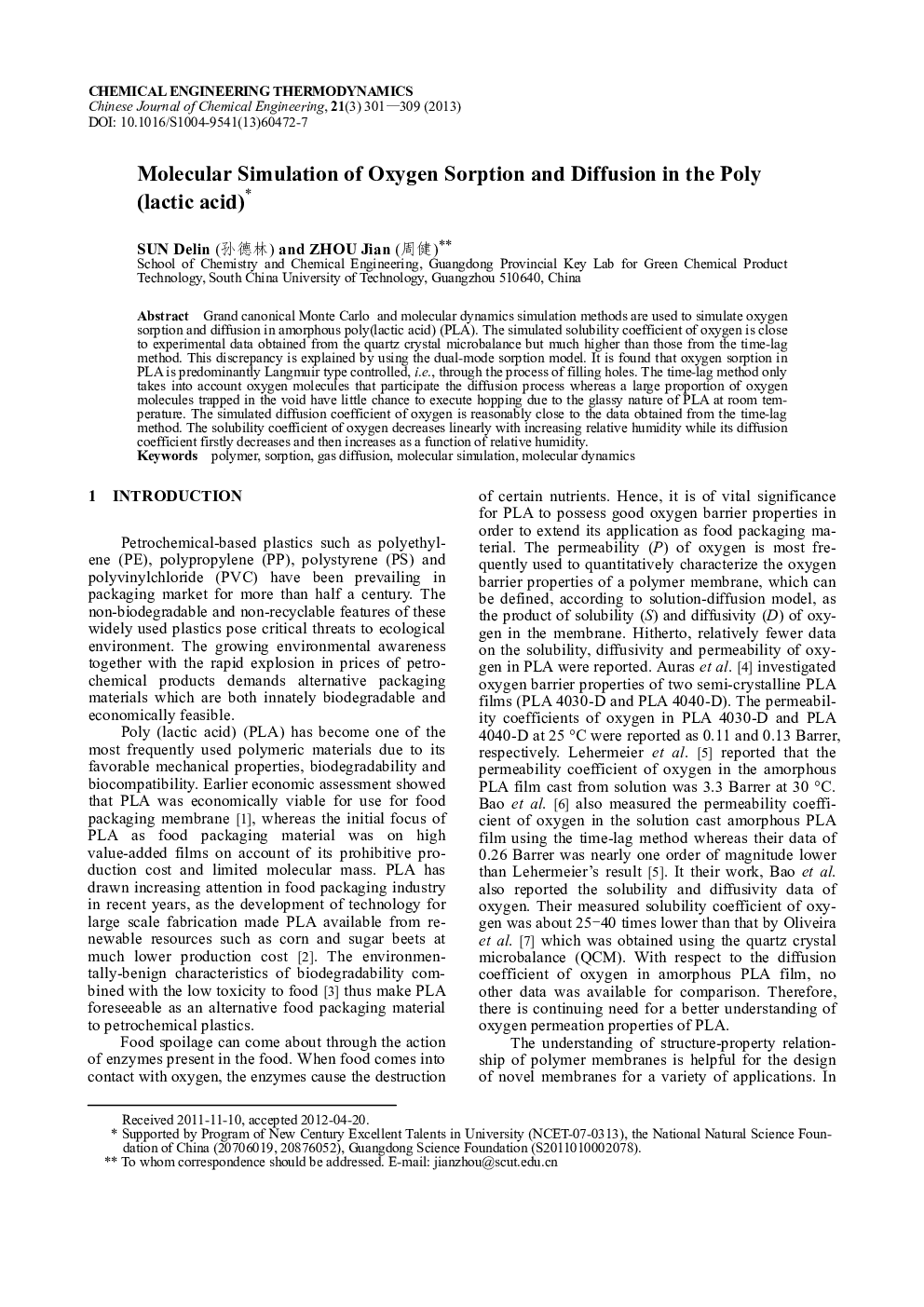| Article ID | Journal | Published Year | Pages | File Type |
|---|---|---|---|---|
| 168499 | Chinese Journal of Chemical Engineering | 2013 | 9 Pages |
Grand canonical Monte Carlo and molecular dynamics simulation methods are used to simulate oxygen sorption and diffusion in amorphous poly(lactic acid) (PLA). The simulated solubility coefficient of oxygen is close to experimental data obtained from the quartz crystal microbalance but much higher than those from the time-lag method. This discrepancy is explained by using the dual-mode sorption model. It is found that oxygen sorption in PLA is predominantly Langmuir type controlled, i.e., through the process of filling holes. The time-lag method only takes into account oxygen molecules that participate the diffusion process whereas a large proportion of oxygen molecules trapped in the void have little chance to execute hopping due to the glassy nature of PLA at room temperature. The simulated diffusion coefficient of oxygen is reasonably close to the data obtained from the time-lag method. The solubility coefficient of oxygen decreases linearly with increasing relative humidity while its diffusion coefficient firstly decreases and then increases as a function of relative humidity.
